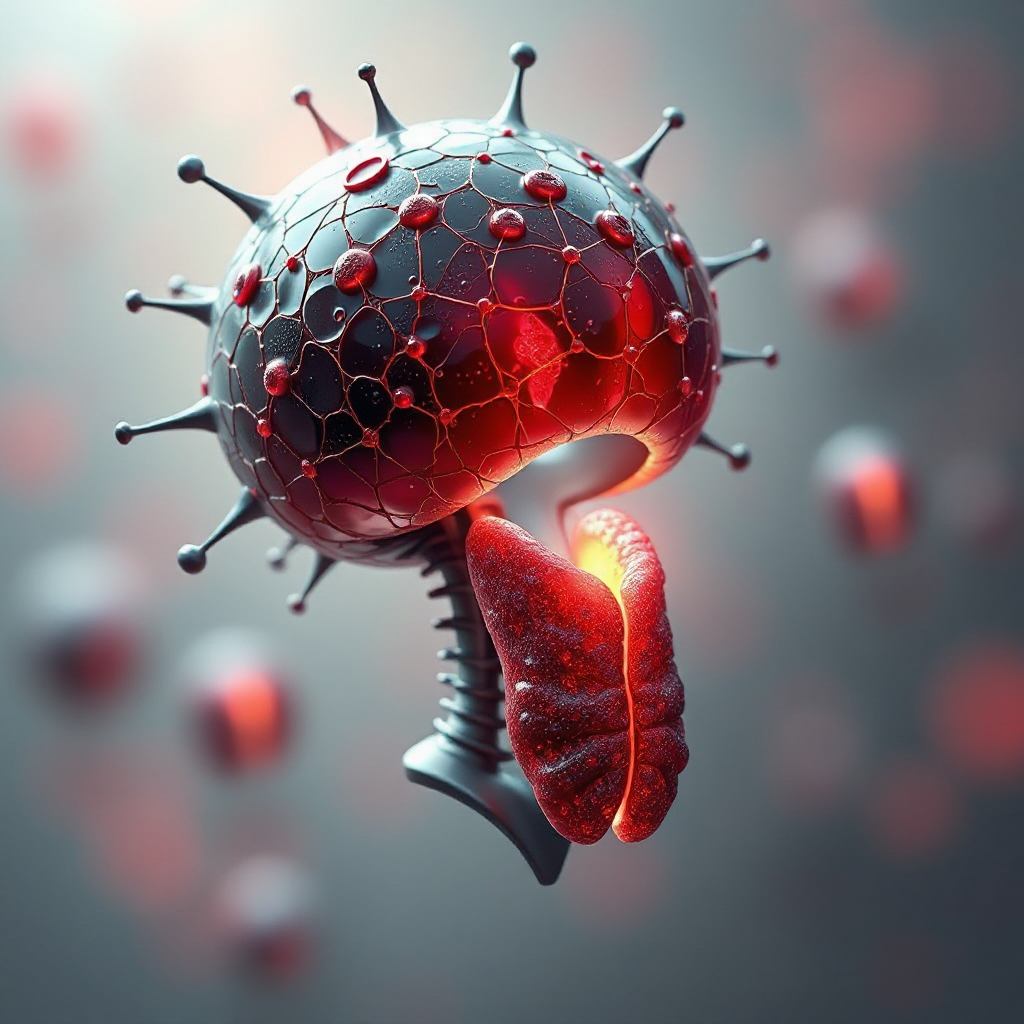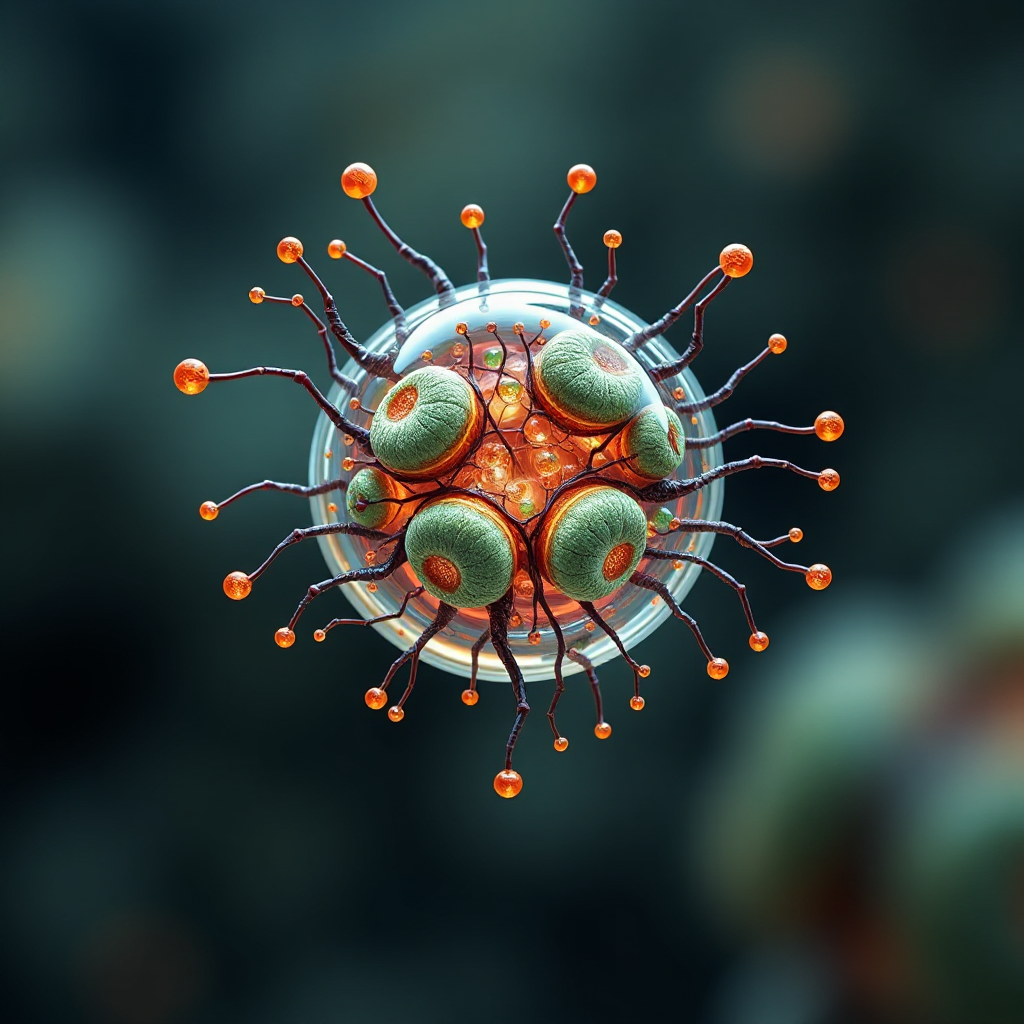What Is Thyroid Cancer and Its Symptoms

Thyroid cancer develops in the thyroid gland, a small butterfly-shaped organ located at the base of your neck. This gland plays a vital role in regulating your metabolism, heart rate, and body temperature. While thyroid cancer is relatively rare, its prevalence has increased over the years.
The global age-standardized prevalence rate rose from 14.06 per 100,000 in 1990 to 22.02 per 100,000 in 2019.
In the United States, an estimated 44,020 new cases are expected in 2025, with women being more affected than men.
Early detection significantly improves outcomes. For example, the five-year survival rate for localized papillary thyroid cancer exceeds 99.5%. Recognizing symptoms like a neck lump or voice changes can help you seek timely medical attention.
Key Takeaways
Thyroid cancer is uncommon but becoming more frequent. Finding it early is key for good treatment and can give a five-year survival rate over 98%.
Usual symptoms are a neck lump, voice changes, and trouble swallowing. Spotting these signs early helps you get medical care quickly.
Knowing the types of thyroid cancer helps you notice symptoms. It also shows why specific treatment plans are important for better results.
Risk factors include family history, radiation exposure, and some genetic issues. Knowing these can help you take steps to lower your risk.
Regular doctor visits and follow-ups are important after treatment. They check for cancer returning and help manage side effects well.
Understanding Thyroid Cancer

What Is Thyroid Cancer?
Thyroid cancer occurs when the cells in your thyroid gland grow and divide abnormally. This uncontrolled growth can lead to the formation of tumors, which may spread to nearby tissues or other parts of your body. Early detection plays a crucial role in managing this condition effectively.
The Role of the Thyroid Gland
Your thyroid gland, located at the base of your neck, produces hormones that regulate essential body functions. These include metabolism, heart rate, and body temperature. A healthy thyroid ensures your body operates smoothly. When cancer affects this gland, it disrupts its normal functioning, potentially leading to noticeable symptoms.
Types of Thyroid Cancer
Thyroid cancer is classified into several types based on how the cancer cells appear under a microscope. Each type has unique characteristics and prevalence rates.
Papillary Thyroid Cancer
Papillary thyroid cancer is the most common type, accounting for 80-85% of cases. It grows slowly and often spreads to lymph nodes. With proper treatment, the prognosis is excellent.
Follicular Thyroid Cancer
This type is more aggressive than papillary thyroid cancer. It rarely spreads to lymph nodes but may affect other organs. It is the second most common type of thyroid cancer.
Medullary Thyroid Cancer
Medullary thyroid cancer is less common, making up 4-10% of cases. It tends to spread to lymph nodes and other organs, making it more challenging to treat.
Anaplastic Thyroid Cancer
Anaplastic thyroid cancer is rare and highly aggressive. It accounts for 2-3% of cases and spreads quickly to other parts of the body. Early diagnosis is critical for managing this type effectively.
Type of Thyroid Cancer | Characteristics | Prevalence |
|---|---|---|
Papillary thyroid cancer | Slow-growing, differentiated, may spread to lymph nodes, good prognosis with treatment. | 80-85% of cases |
Follicular thyroid cancer | More aggressive than papillary, does not usually spread to lymph nodes, may spread to other organs. | Second most common type |
Medullary thyroid cancer | More aggressive, less differentiated, likely to spread to lymph nodes and other organs. | 4-10% of all thyroid cancers |
Anaplastic thyroid cancer | Very aggressive, undifferentiated, quickly spreads to other parts of the body. | 2-3% of cases |
Understanding the differences between these types helps you recognize the importance of early diagnosis and tailored treatment plans.
Symptoms of Thyroid Cancer

Common Symptoms
Lump or swelling in the neck
One of the earliest signs of thyroid cancer is a lump or swelling in your neck. This lump often appears at the base of your neck and may feel firm or painless. You might notice it while looking in the mirror or touching your neck. Although not all neck lumps indicate cancer, it’s important to have any unusual swelling checked by a doctor.
Hoarseness or voice changes
Thyroid cancer can affect your vocal cords, leading to noticeable changes in your voice. You may experience persistent hoarseness or a raspy tone that doesn’t improve over time. If your voice changes without an obvious cause, such as a cold, it could be a sign of an underlying issue.
Difficulty swallowing or breathing
As thyroid cancer progresses, it can press against your windpipe or esophagus. This pressure may cause trouble swallowing or breathing. You might feel a sensation of tightness in your throat or experience shortness of breath during routine activities. These symptoms should prompt immediate medical attention.
Tip: Early symptoms like a neck lump or voice changes are often painless. Don’t ignore these signs, even if they seem minor.
Rare or Advanced Symptoms
Persistent neck pain
In advanced stages, thyroid cancer may cause ongoing pain in your neck or throat. This pain can radiate to your ears and become more noticeable over time. Unlike temporary discomfort, persistent pain warrants further evaluation.
Enlarged lymph nodes
Thyroid cancer can spread to nearby lymph nodes, causing them to swell. You might feel these enlarged nodes as firm, painless lumps under your jaw or around your neck. Swollen lymph nodes are a common sign of advanced thyroid cancer.
Unexplained weight loss or loss of appetite
In rare cases, thyroid cancer may lead to rapid weight loss or a reduced appetite. These symptoms often occur when the cancer spreads to other parts of your body. If you notice significant changes in your weight or eating habits without a clear reason, consult your doctor.
Note: Early stages of thyroid cancer often show no symptoms. Regular check-ups can help detect issues before they progress.
Causes and Risk Factors of Thyroid Cancer
What Causes Thyroid Cancer?
Thyroid cancer develops when cells in your thyroid gland undergo genetic changes, causing them to grow uncontrollably. These changes can result from a combination of genetic and environmental factors. For instance, exposure to radiation significantly increases the risk. Historical events, such as the Hiroshima and Nagasaki bombings, revealed a higher incidence of thyroid cancer among exposed individuals, especially children. Even low doses of radiation can damage DNA in thyroid cells, leading to cancer years later. Obesity has also been identified as a contributing factor, although the exact mechanism remains unclear.
Genetic mutations play a critical role in some cases. Researchers have linked familial medullary thyroid cancer to an abnormal RET gene. This discovery has enabled early detection and preventive measures for at-risk family members. Understanding these causes can help you take proactive steps to reduce your risk.
Risk Factors
Family history of thyroid cancer
If someone in your family has had thyroid cancer, your risk increases. Even without a specific genetic mutation, a family history of the disease suggests a higher likelihood of developing it. Certain inherited conditions, like Familial Adenomatous Polyposis (FAP), also raise the risk of papillary thyroid cancer.
Exposure to radiation
Radiation exposure is one of the most well-documented risk factors. Children exposed to radiation, whether from medical treatments or environmental sources, face a higher risk. The likelihood of developing thyroid cancer increases with higher doses, particularly those exceeding 0.05-0.1 Gy. The latency period between exposure and cancer development typically ranges from 5 to 15 years.
Genetic conditions and mutations
Specific genetic conditions are strongly associated with thyroid cancer. For example:
Mutations in the RET gene are linked to medullary thyroid cancer, often due to MEN2 syndromes.
Follicular thyroid cancer has connections to Cowden Syndrome and Carney Complex.
Papillary thyroid cancer may occur in individuals with FAP.
Recognizing these risk factors can help you stay vigilant and seek medical advice if needed.
Diagnosing Thyroid Cancer
Medical Tests for Thyroid Cancer
Diagnosing thyroid cancer involves several tests to confirm its presence and determine its extent. Your doctor may recommend the following:
Physical examination: The first step often includes checking your neck for lumps or swelling. Your doctor may also ask about symptoms like hoarseness or difficulty swallowing.
Imaging tests:
Ultrasound: This is usually the first imaging test. It provides detailed images of your thyroid and nearby lymph nodes, helping to identify suspicious nodules.
CT Scan: This test creates cross-sectional images of your neck and chest. It helps assess the size and location of the tumor and checks for its spread.
MRI: If you need a test without radiation, an MRI can evaluate the thyroid and surrounding tissues.
Nuclear Medicine Thyroid Uptake & Scan: This test measures thyroid function and identifies "cold" nodules, which are more likely to be cancerous.
PET Scan: This advanced imaging test detects cancer that has spread beyond the neck. It is often combined with a CT scan for better accuracy.
Biopsy and lab tests: A fine-needle aspiration biopsy is the most definitive test. It involves removing a small tissue sample from the thyroid nodule for analysis. Blood tests may also check thyroid hormone levels and detect markers like calcitonin, which can indicate medullary thyroid cancer.
Early and accurate diagnosis ensures you receive the most effective treatment plan.
Staging Thyroid Cancer
Once thyroid cancer is diagnosed, staging determines how far it has spread. This process helps guide treatment decisions. Doctors use the TNM system for staging:
T: Describes the size and extent of the primary tumor.
N: Indicates whether cancer has spread to nearby lymph nodes.
M: Identifies if cancer has metastasized to other organs.
Other factors, such as your age and overall health, also influence staging. For example, younger patients often have a better prognosis, even with advanced stages. Understanding the stage of your cancer helps your doctor recommend the best treatment options, whether surgery, radioactive iodine therapy, or other approaches.
Knowing the stage of your thyroid cancer empowers you to make informed decisions about your care.
Treatment and Prognosis of Thyroid Cancer
Treatment Options
Surgery
Surgery is often the first step in treating thyroid cancer. Doctors may remove part or all of your thyroid gland, depending on the tumor's size and location. This procedure, known as a thyroidectomy, can effectively eliminate cancerous cells. If the cancer has spread to nearby lymph nodes, surgeons may remove those as well.
Radioactive iodine therapy
Radioactive iodine therapy targets any remaining thyroid tissue after surgery. You take a capsule or liquid containing radioactive iodine, which destroys cancer cells without harming other tissues. This treatment works best for papillary and follicular thyroid cancers.
Hormone therapy
After surgery, you may need hormone therapy to replace the hormones your thyroid gland no longer produces. This therapy also helps suppress thyroid-stimulating hormone (TSH), which can encourage cancer growth.
Radiation or chemotherapy
Radiation therapy uses high-energy rays to kill cancer cells. It is often used for advanced or aggressive types like anaplastic thyroid cancer. Chemotherapy, which involves cancer-fighting drugs, is less common but may be necessary for cancers that do not respond to other treatments.
Note: The choice of treatment depends on factors like your age, cancer stage, and overall health. Some patients may also consider clinical trials for access to new therapies.
Prognosis and Survival Rates
Is Thyroid Cancer Curable?
Thyroid cancer is highly treatable, especially when detected early. The five-year survival rate for localized cases exceeds 98%. Early detection reduces complications and improves outcomes. For example, papillary and follicular thyroid cancers have survival rates above 99.5% when caught early.
Importance of follow-up care
Follow-up care plays a crucial role in maintaining your health after treatment. Regular check-ups help monitor for recurrence and manage any side effects. Your doctor may recommend periodic blood tests, imaging scans, or physical exams. Staying vigilant ensures long-term success in managing thyroid cancer.
Thyroid Cancer Type | Stage | |
|---|---|---|
Papillary | Localized | >99.5% |
Regional | 99% | |
Distant | 74% | |
Follicular | Localized | >99.5% |
Regional | 98% | |
Distant | 67% | |
Medullary | Localized | >99.5% |
Regional | 92% | |
Distant | 43% | |
Anaplastic | Localized | 39% |
Regional | 11% | |
Distant | 4% |
Early detection and consistent follow-up care significantly improve survival rates, even for advanced cases.
Thyroid cancer is highly treatable when detected early. You can improve your chances of recovery by recognizing symptoms like neck lumps or voice changes and consulting a doctor promptly.
Early diagnosis offers a 5-year survival rate of approximately 98%.
It reduces the risk of complications, such as vocal cord damage or extensive surgeries.
Awareness efforts, including education and routine screenings, play a vital role in prevention.
"Delaying diagnosis increases the risk of local invasion... the sooner they are diagnosed and treated the better."
Stay informed and proactive about your health. Early action saves lives.
FAQ
What are the early warning signs of thyroid cancer?
You might notice a lump in your neck, hoarseness, or difficulty swallowing. These symptoms often appear early. Pay attention to any persistent changes in your neck or voice and consult a doctor promptly.
Can thyroid cancer spread to other parts of the body?
Yes, thyroid cancer can spread, especially in advanced stages. It may affect lymph nodes, lungs, or bones. Early detection reduces the risk of metastasis and improves treatment outcomes.
Is thyroid cancer hereditary?
Some types, like medullary thyroid cancer, have genetic links. If your family has a history of thyroid cancer, genetic testing can help assess your risk and guide preventive measures.
How is thyroid cancer different from a benign thyroid nodule?
Benign nodules are non-cancerous and usually harmless. Thyroid cancer involves abnormal cell growth that can spread. A biopsy helps determine if a nodule is cancerous or benign.
Can thyroid cancer return after treatment?
Yes, thyroid cancer can recur even after successful treatment. Regular follow-ups, including imaging and blood tests, help monitor for recurrence and ensure early intervention if needed.
Tip: Stay proactive about your health. Early detection and consistent follow-up care improve your chances of recovery.
See Also
Understanding Endometrial Cancer: Key Symptoms To Watch For
Hepatocellular Carcinoma Explained: Recognizing Important Symptoms
Hodgkin's Lymphoma Overview: Identifying Common Symptoms
